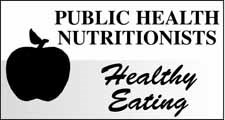Research from the United States and Canada has shown that the more fast food teens have, the less vegetables, fruit and milk products they eat.
The 2004 Canadian Community Health Survey showed that teens also ate fewer vegetables and fruit than suggested by Canada's Food Guide. Teens reported 4.5 servings out of the suggested 7-8 servings per day. Teens between the ages of 10-16 years old also fell short in Milk and Alternatives. Sixty-one percent of boys and 83% of girls did not meet the minimum of 3 servings per day. This shows that teens may not be getting the needed vitamins and minerals, such as calcium, for healthy growth.
Foods that do not fit into Canada's Food Guide may be taking the place of healthy foods. A Canadian study also showed that 25% of daily calories teens aged 14 to 18 ate came from foods like soft drinks, oils and fats, fruit drinks, chocolate bars, and potato chips. These foods are high in sugar or fat. Among 14-18 year olds, a third reported they had eaten something from a fast-food outlet the day before. Even though not all foods served at fast food outlets are high in sugar, fat, or calories, 40% of those eating at a fast food outlet chose a hamburger, hot dog, pizza or sandwich.
There are ways that people of all ages can make healthier choices when eating out: Choose meals with vegetables, whole grains, and lean meats such as subs, wraps and pitas. Choose outlets that provide tasty add-ons to a meal. Look for salsa, oil-based sauces instead of creamy spreads and hot peppers. Many ethnic themed outlets provide low fat vegetarian choices such as beans and chickpeas or humus. Choose milk or water to drink most often. Order a kid's meal at a fast food restaurant. The portion size will be small and high fat items such as bacon and sauces will likely not be added. Include more salads, with dressing on the side, rather than French fries. Plan and shop for meals ahead of time to decrease the need for fast foods. Have vegetables and fruit on hand for snacks and social events. Keep in mind that teens may like cut-up fruit as a treat. On food labels, look at the % daily value and choose foods that are higher in fibre and nutrients such as calcium and lower in saturated fat, trans fat and sodium. At convenience stores, look for smaller packaged items and drinks. For example a can of pop instead of a bottle.
It can be tempting to choose fast food for convenience at any age, but try not to let fast replace healthy eating. If you want nutrition information, ask. Many fast foods outlets have nutrition information on their web sites or in the store. If you have questions, contact your local Public Health Nutritionist.Written by the Public Health Nutritionists of Saskatchewan and support by Public Health, Sunrise Health Region.
If you have any comments or questions please contact: Heather Torrie, Public Health Nutritionist, Sunrise Health Region, 150 Independent Street, Yorkton, Sask. S3N 0S7 or phone: 786-0600.




